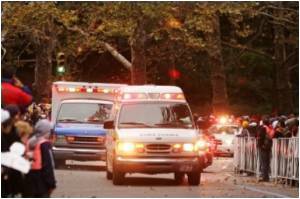A portion of U.S. population don't have access to trauma care within an hour's drive, with certain vulnerable groups are at higher risk of worse access.

As trauma centers close, concern has increased regarding disparities in access to trauma care. Renee Hsia, M.D., M.Sc., of the University of California, San Francisco, and Yu-Chu Shen, Ph.D., of Naval Postgraduate School, Monterey, Calif., linked data from an annual survey conducted by the American Hospital Association with zip code�level data from the U.S. Census. They then calculated the odds of having easy (defined as travel times of less than 20 minutes), moderate (travel times of 20 to 60 minutes) and difficult (travel times greater than 60 minutes) access to trauma care.
Overall, a significant segment of the population did not have access to trauma care within one hour of driving time. In urban areas, 67 percent of the population had easy access and 12 percent had difficult access; in rural areas, 24 percent had easy access and 31 percent had difficult access.
In addition, access to trauma care was uneven across communities, and areas with higher proportions of certain vulnerable groups had a higher risk of difficult access. "In particular, we found that areas with a higher proportion of certain groups, such as African American and near-poor populations in urban and rural areas and foreign-born populations in urban areas, were at higher risk of having difficult access to trauma centers or, in other words, were farther away from trauma centers," the authors write.
The findings do not suggest that trauma centers should be built in every small town in the United States, but highlight the fact that access is more limited for poor and minority populations in both rural and urban settings, they note. "Stakeholders and health care planners should consider these factors in the development of trauma systems because a mismatch of potential need and access could signal inefficiencies in the delivery of care," the authors conclude.
Source-Eurekalert










